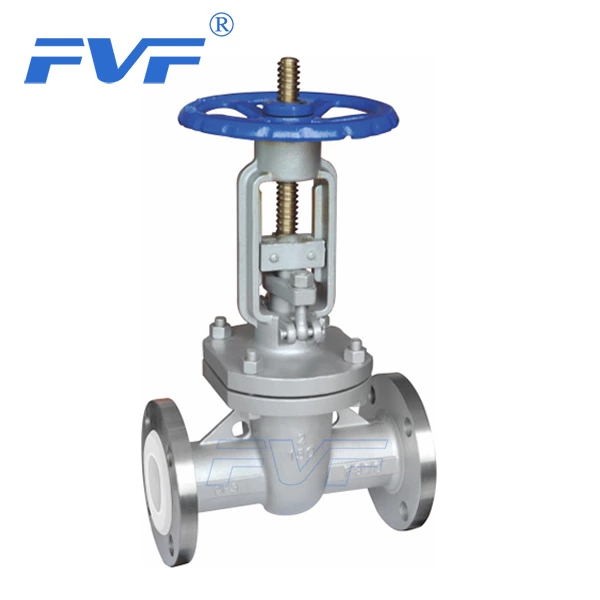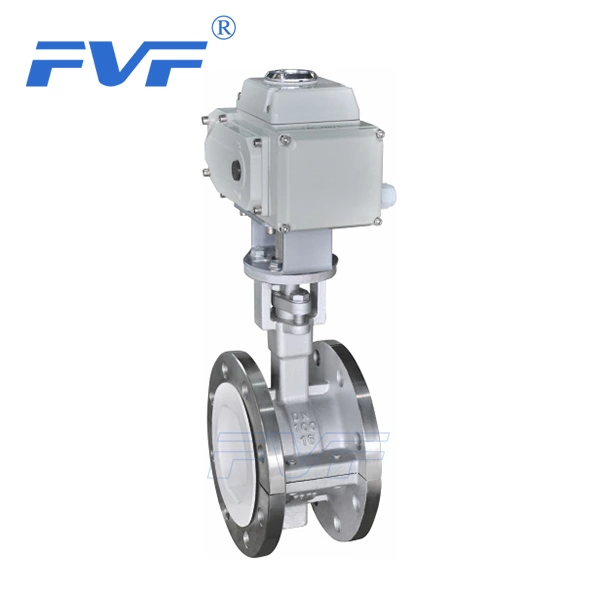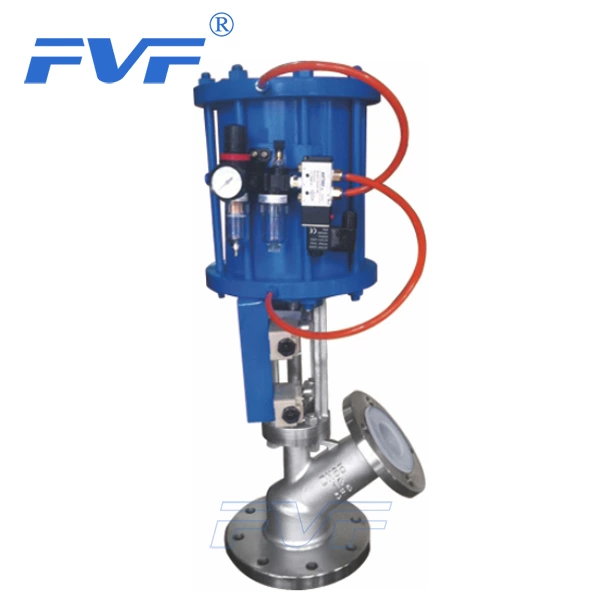Knowledge On Valve Selection
1. Select Lined Ball Valve according to the parameters of the regulating medium:
During the production process, in order to make the flow rate, pressure and other parameters of the medium meet the requirements of the process flow, it is necessary to install a regulating mechanism to adjust the above parameters. The main working principle of the regulating mechanism is to achieve the purpose of adjusting the above parameters by changing the flow area between the valve disc and the valve seat. This type of valve is collectively called a control valve, which is divided into self-driven control valves such as pressure reducing valves and pressure stabilizing valves driven by the power of the medium itself, and those driven by leading power (such as electricity, compressed air and hydraulic power) are called externally driven control valves, such as electric regulating valves, pneumatic regulating valves and hydraulic regulating valves.
2. Select valves to prevent backflow of the medium:
The function of this type of valve is to allow the medium to flow in one direction only and prevent the flow in the opposite direction. Usually this valve works automatically. Under the pressure of the fluid flowing in one direction, the valve disc opens; when the fluid flows in the opposite direction, the fluid pressure and the self-reclosing valve disc of the valve disc act on the valve seat, thereby cutting off the flow. Among them, the check valve belongs to this type of valve, which includes swing check valves and lift check valves. The swing check valve has a hinge mechanism and a door-like disc that rests freely on the inclined seat surface. In order to ensure that the disc can reach the appropriate position of the seat surface every time, the disc is designed in the hinge mechanism so that the disc has enough swing space and makes the disc truly and comprehensively contact the seat. The disc can be made entirely of metal, or it can be inlaid with leather, rubber, or a synthetic covering on the metal, depending on the performance requirements. When the swing check valve is fully opened, the fluid pressure is almost unimpeded, so the pressure drop through the valve is relatively small. The disc of the lift check valve is located on the valve seat sealing surface on the valve body. In addition to the disc being able to rise and fall freely, the rest of this valve is like a stop valve. The fluid pressure lifts the disc from the seat sealing surface, and the medium reflux causes the disc to fall back onto the seat and cut off the flow. Depending on the conditions of use, the solenoid valve disc can be a full metal structure or inlaid with a rubber pad or rubber ring on the disc frame. Like the stop valve, the passage of fluid through the lift check valve is also narrow, so the pressure drop through the lift check valve is larger than that of the swing check valve, and the flow of the swing check valve is less restricted.
Three. Select valves according to the on-off properties of the medium:
1. Gate valve: The gate valve is used as a cut-off medium. When fully open, the entire flow is straight, and the pressure loss of the medium is minimal. Gate valves are usually suitable for working conditions that do not require frequent opening and closing, and keep the gate fully open or fully closed. The gate valves produced by Shanghai Xingou Valve are not suitable for use as regulation or throttling. For high-speed flowing media, the gate can cause vibration of the gate when it is partially opened, and the vibration may damage the sealing surface of the gate and the valve seat, and throttling will cause the gate to be eroded by the medium. In terms of structural form, the main difference is the form of the sealing element used. According to the form of the sealing element, gate valves are often divided into several different types, such as: wedge gate valve, parallel gate valve, parallel double gate gate valve, wedge double gate gate, etc. The most commonly used forms are wedge gate valves and parallel gate valves.
2. The valve stem axis of the stop valve is perpendicular to the valve seat sealing surface. The opening or closing stroke of the diaphragm valve stem is relatively short, and it has a very reliable cutting action, making this valve very suitable for cutting off or regulating and throttling the medium. When the valve disc is in the open state, there is no contact between its valve seat and the valve disc sealing surface, and it has a very reliable cutting action, making this valve very suitable for cutting off or regulating and throttling the medium. Once the stop valve is in the open state, there is no contact between its valve seat and the valve disc sealing surface, so its sealing surface has less mechanical wear. Since the valve seat and valve disc of most stop valves are relatively easy to repair or replace the sealing element without removing the entire valve from the pipeline, this is very suitable for occasions where the valve and pipeline are welded together. The flow direction of the steam trap medium changes when passing through this type of valve, so the flow resistance of the stop valve is higher than that of other valves.
Commonly used stop valves are as follows:
1) Angle stop valve: In an angle stop valve, the fluid only needs to change direction once, so that the pressure passing through this valve is smaller than that of a stop valve of conventional structure.
2) DC stop valve: In a DC or Y-shaped stop valve, the flow channel of the valve body forms an oblique line with the main flow channel, so that the degree of damage to the flow state is smaller than that of a conventional stop valve, and the pressure loss through the valve is correspondingly smaller.
3) Plunger stop valve: This type of stop valve is a variation of a conventional stop valve. In this valve, the valve disc and valve seat are usually designed based on the plunger principle. The valve disc is polished into a plunger and connected to the valve stem, and the seal is achieved by two elastic sealing rings on the plunger. Plug valve The two elastic sealing rings are separated by a collar, and the sealing ring around the plunger is pressed firmly by the load applied to the valve cover by the valve cover nut. The elastic sealing ring can be replaced and can be made of a variety of materials. The valve is mainly used for opening or closing, but it is equipped with a special form of plunger or special collar, which can also be used to adjust the flow.
3. Butterfly valve: The butterfly plate of the butterfly valve is installed in the diameter direction of the pipeline. In the cylindrical channel of the butterfly valve body, the disc butterfly plate rotates around the axis, and the rotation angle is between 0° and 90°. When it rotates to 90°, the valve is in a fully open state. The butterfly valve has a simple structure, small size, light weight, and is composed of only a few parts. Moreover, it can be quickly opened and closed by rotating 90°, which is simple to operate. At the same time, the valve has good fluid control characteristics. When the butterfly valve is in the fully open position, the thickness of the butterfly plate is the only resistance when the medium flows through the valve body. Therefore, the pressure drop generated by the valve is very small, so it has good flow control characteristics.
Butterfly valves have two sealing types: elastic seal and metal seal.
Elastic seal valves, the sealing ring can be embedded in the valve body or attached to the periphery of the butterfly plate. Metal seals can adapt to higher working temperatures, while elastic seals have the defect of being limited by temperature. If the butterfly valve is required to be used as a flow control, the main thing is to correctly select the size and type of the valve. The structural principle of the butterfly valve is particularly suitable for making large-diameter valves. Butterfly valves are not only widely used in general industries such as petroleum, gas, chemical industry, and water treatment, but also in cooling water systems of thermal power plants.
Common butterfly valves include wafer-type butterfly valves and flange-type butterfly valves.
Wafer-type butterfly valves use stud bolts to connect the valve between two pipe flanges, while plunger valve flange-type butterfly valves have flanges on the valve, and the flanges at both ends of the valve are connected to the pipe flanges with bolts.
4. Ball valve: The ball valve evolved from the plug valve. It has the same 90-degree rotation lifting action, but the difference is that the plug body is a sphere with a circular through hole or channel passing through its axis. That is, when the ball rotates 90 degrees, the inlet and outlet should all present a spherical surface, thereby cutting off the flow. The ball valve can be closed tightly with only a 90-degree rotation operation and a very small torque. The completely equal inner cavity of the valve body provides a very small resistance and straight flow channel for the medium. Professionals of Shanghai Xingou Valve believe that ball valves are most suitable for direct opening and closing, but recent developments have designed ball valves to be used for throttling and flow control. The main features of ball valves are compact structure, easy operation and maintenance, and they are suitable for general working media such as water, solvents, acids and natural gas, as well as media with harsh working conditions such as oxygen, hydrogen peroxide, methane and ethylene. The ball valve body can be integral or combined.






